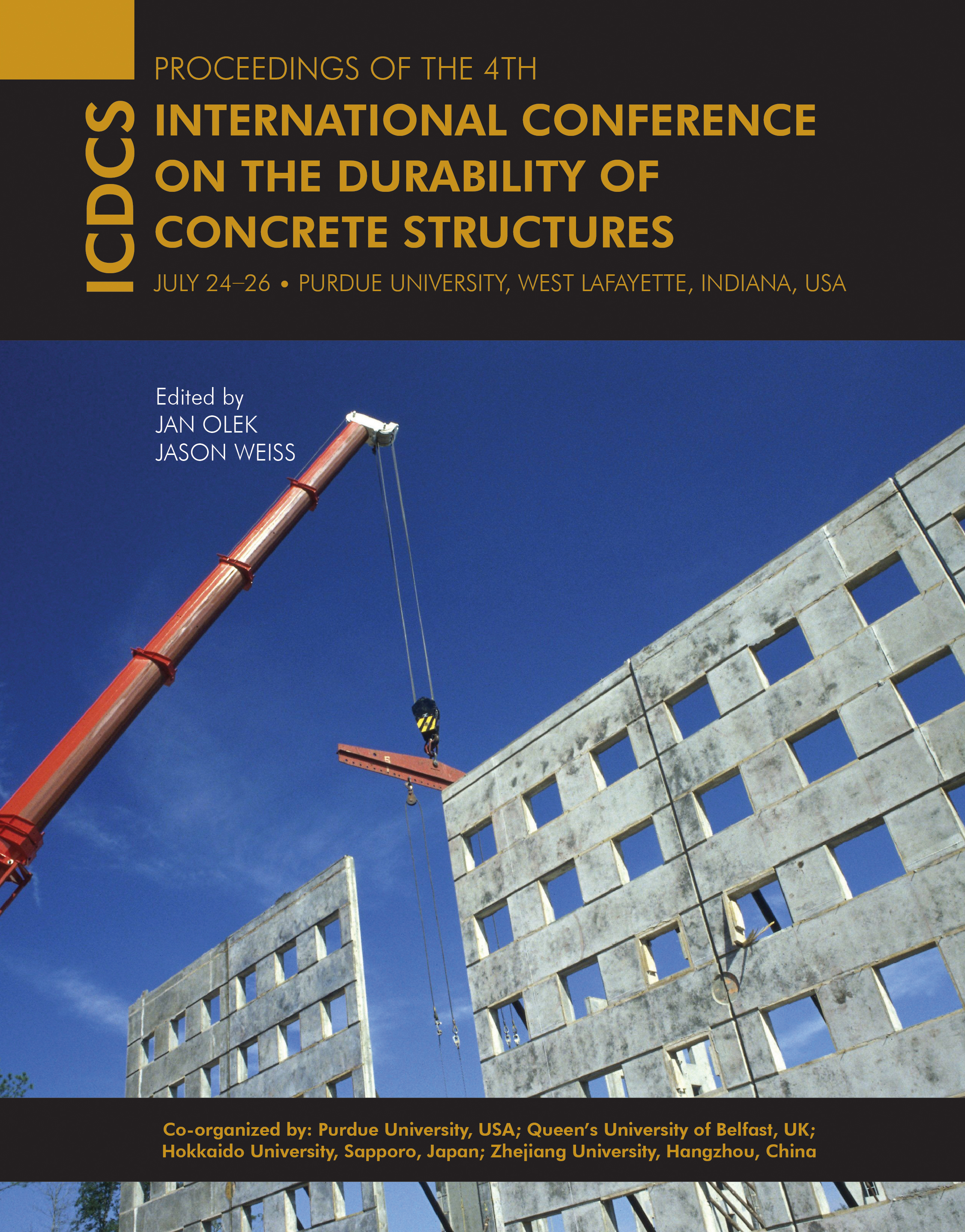Abstract
The volumetric instability of alkali-activated slag (AAS) binders has raised concerns and impeded the acceptance of this Portland cement-free material. The objective of this article is to characterize the influence of drying rate on drying shrinkage behavior of AAS mortars to better understand the mechanisms responsible for its large shrinkage deformation. A series of four AAS mortar mixtures with varying activator composition, as well as a reference Portland cement mortar, was cast and dried at different relative humidities, that is, 30, 50, 70, and 85% RH. Drying took place inside nitrogen-purged environmental chambers for the purpose of eliminating the contribution of carbonation to the total volumetric change of AAS. The shrinkage and corresponding mass loss of 1.27 cm × 1.27 cm × 12.7 cm prisms were measured as a function of time. The results show that shrinkage of AAS varies largely depending on the drying rate, that is, ambient RH. Interestingly, even though the drying mass loss increases with reducing the RH, the magnitude of shrinkage is the largest for samples stored at 50 and 70% RH, depending on the mixture type. Possible causes of these irregular behaviors are discussed. It is concluded that the drying rate has a much more significant influence on AAS than on ordinary Portland cement (OPC), which implies a more complicated shrinkage mechanism for AAS samples stored at various relative humidities.
DOI
10.5703/1288284315409
Included in
Effect of Drying Rate on Shrinkage of Alkali-Activated Slag Cements
The volumetric instability of alkali-activated slag (AAS) binders has raised concerns and impeded the acceptance of this Portland cement-free material. The objective of this article is to characterize the influence of drying rate on drying shrinkage behavior of AAS mortars to better understand the mechanisms responsible for its large shrinkage deformation. A series of four AAS mortar mixtures with varying activator composition, as well as a reference Portland cement mortar, was cast and dried at different relative humidities, that is, 30, 50, 70, and 85% RH. Drying took place inside nitrogen-purged environmental chambers for the purpose of eliminating the contribution of carbonation to the total volumetric change of AAS. The shrinkage and corresponding mass loss of 1.27 cm × 1.27 cm × 12.7 cm prisms were measured as a function of time. The results show that shrinkage of AAS varies largely depending on the drying rate, that is, ambient RH. Interestingly, even though the drying mass loss increases with reducing the RH, the magnitude of shrinkage is the largest for samples stored at 50 and 70% RH, depending on the mixture type. Possible causes of these irregular behaviors are discussed. It is concluded that the drying rate has a much more significant influence on AAS than on ordinary Portland cement (OPC), which implies a more complicated shrinkage mechanism for AAS samples stored at various relative humidities.





